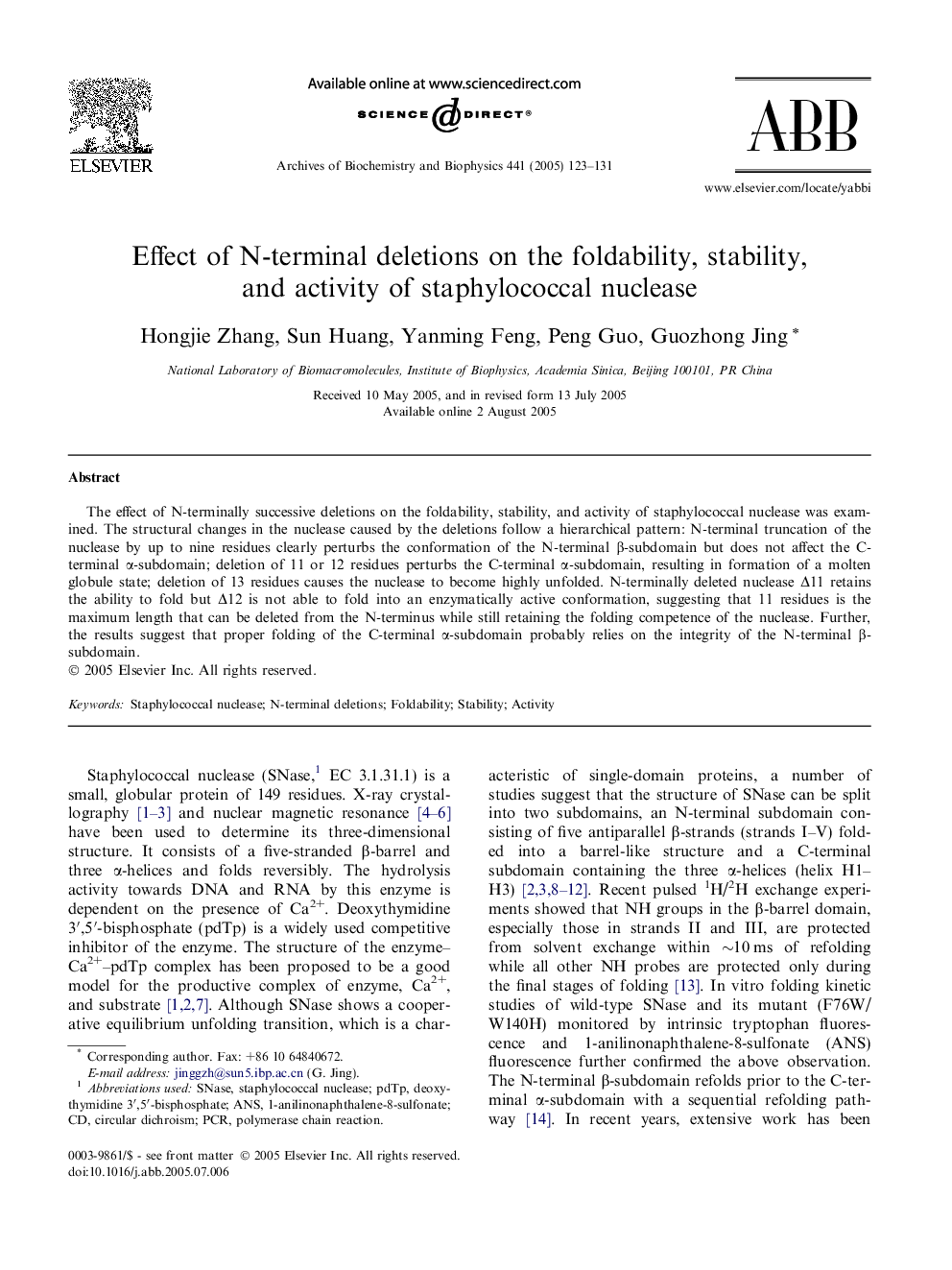| Article ID | Journal | Published Year | Pages | File Type |
|---|---|---|---|---|
| 9882121 | Archives of Biochemistry and Biophysics | 2005 | 9 Pages |
Abstract
The effect of N-terminally successive deletions on the foldability, stability, and activity of staphylococcal nuclease was examined. The structural changes in the nuclease caused by the deletions follow a hierarchical pattern: N-terminal truncation of the nuclease by up to nine residues clearly perturbs the conformation of the N-terminal β-subdomain but does not affect the C-terminal α-subdomain; deletion of 11 or 12 residues perturbs the C-terminal α-subdomain, resulting in formation of a molten globule state; deletion of 13 residues causes the nuclease to become highly unfolded. N-terminally deleted nuclease Î11 retains the ability to fold but Î12 is not able to fold into an enzymatically active conformation, suggesting that 11 residues is the maximum length that can be deleted from the N-terminus while still retaining the folding competence of the nuclease. Further, the results suggest that proper folding of the C-terminal α-subdomain probably relies on the integrity of the N-terminal β-subdomain.
Related Topics
Life Sciences
Biochemistry, Genetics and Molecular Biology
Biochemistry
Authors
Hongjie Zhang, Sun Huang, Yanming Feng, Peng Guo, Guozhong Jing,
